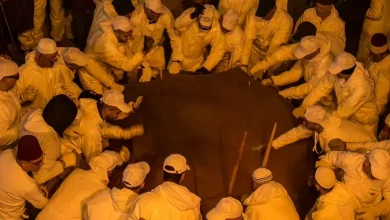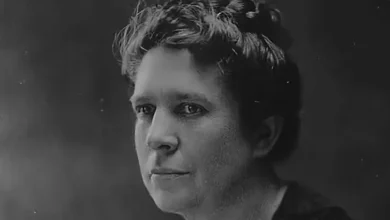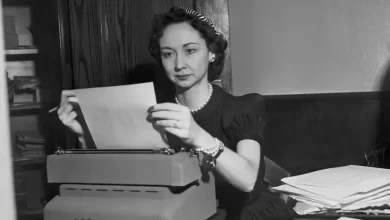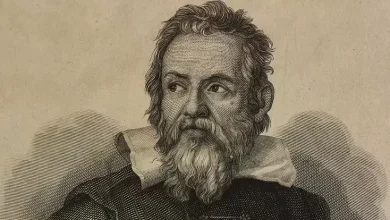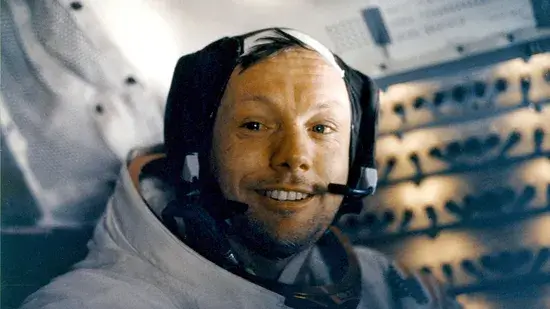
Neil Armstrong was especially suited to be an Apollo astronaut. The self-described “white socks, pocket protector, nerdy engineer” was also a fearless test pilot who dutifully put his life on the line in the name of scientific progress. But Armstrong, an outspoken boy from Ohio, was far less suited to the celebrity and fame that greeted him when he returned to Earth in 1969 as the first human to walk on the Moon. “Neil Armstrong truly was, to the end of his life , an incredibly humble man, impressed by what he had done, but not very impressed by it,” says space historian Rod Pyle, author most recently of “First on the Moon: The Apollo 11 50th Anniversary Experience.” “Armstrong was impressed with the engineering. But in terms of leaving a mark on history, he really felt like he was just a guest there.”
Armstrong himself said as much in a rare 2005 interview with “60 Minutes,” when the late Ed Bradley asked him if he felt uncomfortable with his celebrity. “No, I just don’t deserve it,” Armstrong responded with his signature smile. “Circumstances placed me in this specific role. This was not planned by anyone.”
Content
- From combat pilot to NASA
- Coolness under pressure
- The story behind this famous quote
- Life after the moon
From combat pilot to NASA
But looking back at Armstrong's childhood, it seems that fate chose this talented young man from Wapakoneta, Ohio, to become an astronaut. Armstrong was fascinated by airplanes and flying from a young age. At age 16, he received his pilot's license before getting his driver's license.
He attended college at Purdue University on a U.S. Navy scholarship, but his aeronautical engineering studies were interrupted by the Korean War, in which he served for three years as a combat pilot.
Armstrong flew 78 missions over Korea, bombing supply routes behind enemy lines and escorting spy planes. He even had to eject into a rice field when his low-flying plane was caught in an improvised North Korean booby trap.
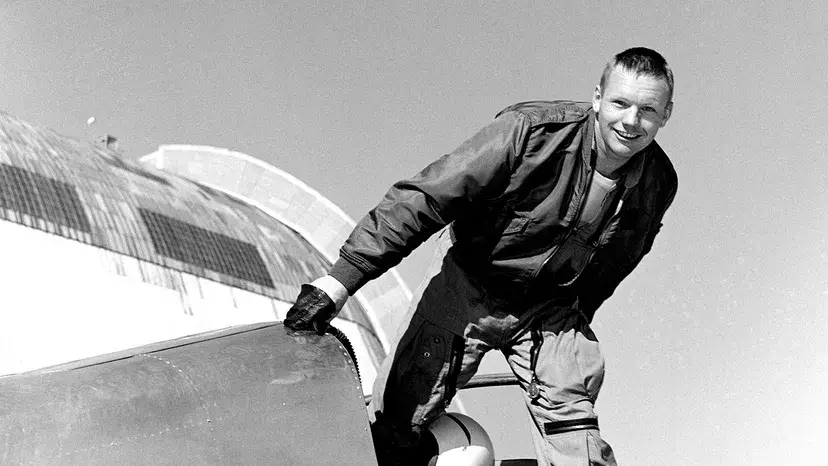
He returned to Purdue to finish his degree and was hired by the fledgling National Advisory Committee for Aeronautics (NACA), the precursor to NASA, in 1955. A year later, Armstrong married Janet Shearon and they welcomed their first son, Eric, in 1957. .
Armstrong began his space career at the NACA Lewis Research Center (now NASA Glenn) in Cleveland, Ohio, but made a name for himself as a daring test pilot at NASA's Flight Research Center (now Armstrong Flight Research Center) in Edwards, California.
Armstrong flew the famous X-15, one of a line of experimental rocket-powered planes that claimed the lives of several brave NASA test pilots. The X-15 reached a top speed of 6,437 km/h (4,000 mph) and managed to climb to the edge of space. But to completely break the bonds of Earth's atmosphere, Armstrong would have to become an astronaut.
The long-awaited call to join NASA's astronaut training program came in 1962, the same year that Neil and Janet suffered a harrowing tragedy. Their second child, a daughter named Karen, died of an inoperable brain tumor. Armstrong threw himself into his new job at NASA headquarters in Houston, Texas.
“I thought the best thing to do in that situation was to get on with my job, keep things as normal as possible, and try my best not to let it affect my ability to do useful things,” Armstrong said. “60 minutes.” (A third son, Mark, was born in 1963.)

Armstrong's hard work paid off. In 1966, he was chosen as command pilot for the Gemini 8 mission. The mission required someone with Armstrong's steady hand to attempt the first docking of two vehicles in orbit, a critical maneuver for the future landing on the Moon.
Coolness under pressure
Armstrong and his co-pilot, David Scott, were able to dock without any problems, but then a faulty thruster caused their space capsule and the attached Gemini Agena target vehicle to begin veering off course. Reacting quickly, Armstrong undocked himself from the Agena, but the release of the other vehicle's weight caused the astronaut's capsule to spin violently.
“We have serious problems here,” Scott told mission control in Houston. “We are falling from end to end. We are disconnected from Agena.”
As the runaway rotation rate approached one revolution per second, the G-forces reached critical levels.
“If Armstrong and Scott had passed out, their oxygen and life support would have eventually run out and they would have died up there,” says Pyle.
Displaying his characteristic coolness under pressure, Armstrong switched to a second control system that gave him access to different thrusters, which he fired to exit the spin, saving their lives and possibly the fate of the entire Apollo mission. Pyle says the loss of a crew in 1966, when the Vietnam War was undermining support for NASA, may have hampered the lunar mission.
But of course that didn't happen, and Armstrong would return to space on July 16, 1969, as commander of Apollo 11. There was controversy over who would have the honor of being the first man to walk on the moon, and Armstrong's crewmate , Edwin “Buzz” Aldrin was lobbying NASA hard. But flight director Chris Kraft swapped the brash Aldrin for Armstrong's soft-spoken hero.
“Neil was Neil,” Kraft explained in a 2005 New Yorker article. “Calm, quiet and with absolute confidence. We all knew he was the Lindbergh type. He had no ego.”
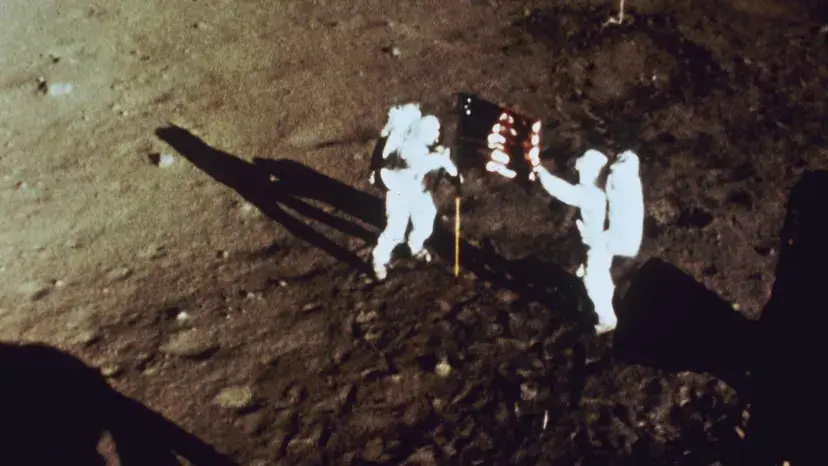
On July 20, 1969, as millions watched live on television, Armstrong piloted the Lunar Module (LM) toward the surface of the Moon. In a last-second decision, he turned off the computer guidance system, which was pointing toward Armstrong and Aldrin. to a large crater filled with rocks, the size of a football stadium. With fuel supplies 30 seconds from empty, Armstrong coolly landed the LM on the heavily dusted lunar surface. The Eagle, codename for the LM, had landed.
“There are a lot of guys about to turn blue,” said Charlie Duke, the spacecraft communicator on behalf of the NASA crew in Houston. “We are breathing again. Thank you very much."
The story behind this famous quote
As Armstrong descended the LM stairs minutes later, he spoke the words that will forever be linked to his legacy: “That’s one small step for man, one giant leap for humanity.” At least that's what everyone heard. Armstrong swears he meant to say, “That’s one small step for a man…” but either the audio was bad or he said it wrong at the time.
“[C]ertainly the ‘a’ was intended, because it is the only way the statement makes any sense,” Armstrong told his biographer, James R. Hansen. “So I hope that history will grant me leeway to drop the syllable and understand that it was certainly intentional, even if it wasn’t said – although in fact it may have been.” He also said that there was no big story behind this famous quote: “What can you say when you walk away from something? Well, something about a step. It simply evolved during the period when I was doing the takeoff training procedures and preparing for EVA [extravehicular activity] and all the other activities that were on our flight schedule at that time.”
In the 2018 film “First Man,” based on Hansen’s 2005 biography of the same name, Armstrong (played by blue-eyed Ryan Gosling) cries during the moonwalk as he remembers his beautiful daughter Karen and deposits her bracelet in a small crater. While it's a touching scene, that's not what happened in real life, says Pyle.
“Armstrong was literally like a 5-year-old boy in a candy store,” says Pyle. “He was running from place to place, really interested in science and having a lot of fun.”
Life after the moon
Returning to Earth, Armstrong and his Apollo 11 crewmates were welcomed as conquering heroes at a parade in New York City attended by 4 million people. NASA then sent them on a 45-day world tour to meet fans and dignitaries, including the Queen.
Armstrong left NASA in 1971 and reentered civilian life as a professor of engineering at the University of Cincinnati.
“You can imagine a college student walking into a first-year aeronautical engineering class and there's Neil Armstrong with chalk dust on the sleeves of his black jacket,” laughs Pyle. “'Isn't that the guy who walked on the moon?'”
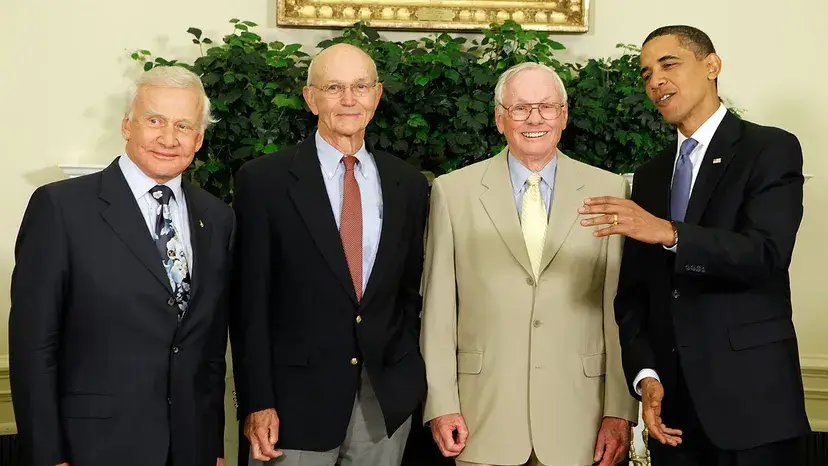
When a reporter tracked down Armstrong for an interview, he expressed frustration with his unwanted notoriety. “How long will it be before I stop being known as an astronaut?” he asked.
Armstrong left teaching after eight years and made a comfortable living serving on the boards of several aerospace companies. After the devastating Challenger explosion in 1986, he served on the NASA commission to investigate the cause of the accident. In rare interviews and public appearances, he expressed disappointment with the lack of funding for NASA and with the kind of ambitious missions that captured his scientific imagination in the 1950s and 1960s.
Armstrong died on August 25, 2012, due to complications from a heart bypass procedure. He was 82 years old. His family sued the hospital for medical negligence and settled for US$6 million.
The man who never asked for recognition was lauded as a true American hero whose “small step” remains one of the proudest collective moments in human history.
Now this is very bad
After 33 years of marriage, Armstrong's wife, Janet, filed for divorce in 1989 with a note left on the kitchen table citing "years of emotional distance." Armstrong remarried in 1994.
